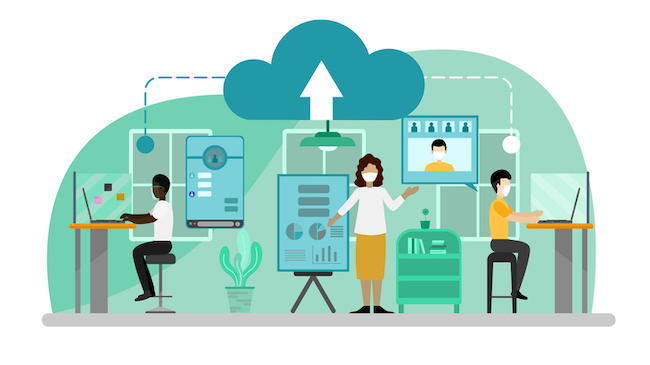What physician insights predict for 2022
Editor’s note: Daniel S. Fitzgerald is CEO of Apollo Intelligence, the parent company to research firms InCrowd and SurveyHealthcareGlobus.
The pandemic has accelerated tech innovations and adoption in most industries. For life sciences this has meant major breakthroughs, not the least of which was the development and global delivery of COVID-19 vaccines in record time. Accelerated adoption of health care technologies such as telehealth and remote patient monitoring, and creative approaches to safe health care delivery born from pandemic shortages, are providing lasting benefits to both clinician and patient.
These health care innovations were envisioned with the understanding that time is our most precious asset and resource in fighting an aggressive, little understood, deadly virus. To address the life science pandemic demands, multiple sectors across the entire industry needed to step up, and they did.
Voice of the clinician – survey participation
Market research didn’t stand still, either. Life science organizations rely heavily on the voice of the clinician, and clinicians in turn see insights survey participation as an important way to amplify their voice. A year or more into the pandemic, the entities that rely heavily on market research began to realize that the traditional pace and approach of market learning to inform business decisioning is insufficient and increasingly becoming stale.
Though it began pre-pandemic, the need for advanced technology and process to springboard creativity and innovation has never been more apparent – with continuous on-demand research and rapid-learning a business imperative.
In life sciences, 2022 will bring a further push toward tech innovation and new paths to customer access and engagement, particularly in market insights as it forms the foundation of faster, continuous learning.

5 life science and B2C market research trends for 2022
After fielding more than a million questions to health care professionals during the two years of the pandemic, in a 30-part COVID-19 tracking series and across hundreds of client engagements, five trends have emerged for 2022. These trends are consistent both in life science market research and in the B2C domains it touches.
- Collaboration. Pharma companies rarely collaborate with competitors, but COVID provided the imperative to work together against a common goal. The same trend emerged as regional hospital competitors planned for COVID capacity, and as market insights players adopted each other’s technologies. It’s about efficiency for all – and an overdue realization that partnering can be a show of strength, not weakness, that benefits the brand.
- Elimination of redundant processes. The FDA’s COVID-related streamlined review and handling of emergency use authorization rewrote the drug approval process and proved it’s possible to cut redundancies without compromising quality nor the scope of clinical trials. With 70 key potential drug launches expected during in 2022 (BioMedTracker, PharmaIntelligence, 2021), the time is now to allow patients with rare cancers, Alzheimer’s, autoimmune disease or a host of life-threatening conditions to benefit from accelerated approvals.
- More data, and smarter use of it. Patient smart devices are ushering in an era of technology-driven therapies via remote monitoring that feeds more data to the physician – data that is invaluable in fine-tuning treatments. Conversely, understanding which populations respond best to which technologies is equally important in maximizing improved outcomes. 2022 will see enhanced use of data to improve understanding of the appropriate home monitoring tools for more refined, specific segments of patients as this market matures.
- Continuous learning. Consumer businesses already know the imperative for streamlined mobile dialogues that engage the prospect toward understanding their needs, then serving them. Life science companies will double-down on continuous learning solutions in both quant and qual, and combined approaches. Rather than waiting six months to develop a survey, field and analyze it, organizations will embrace more aggressive, real-time tracking solutions to understand iterative changes in their markets.
- Mobile and digital dialogues will reign. Behind the omnipresent “agility” buzzword in today’s industry is the imperative that every dialogue – B2B and B2C – be accessible on mobile platforms, and in the digital space. Period. The pandemic has driven digital engagement across the board to be smoother and easier – be it in health care delivery or consumer retail. This trend will continue in 2022 regardless of the level of in-person dialogues taking place.
Market insights have always provided the rudder to navigate seas of uncertainty. As 2022 brings more change and challenge, the pathways that delivered agility in the past two years will help health care and business processes evolve, add efficiency and meet consumers where they are.
